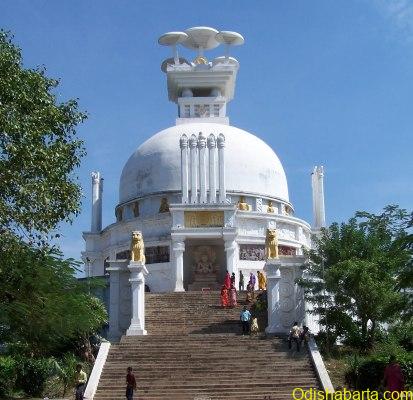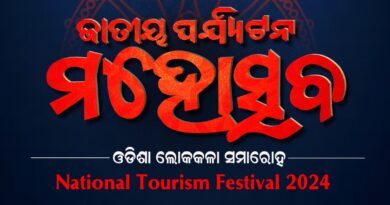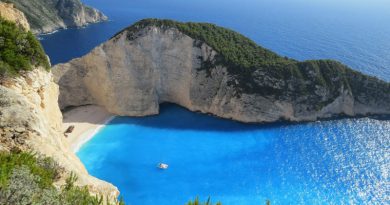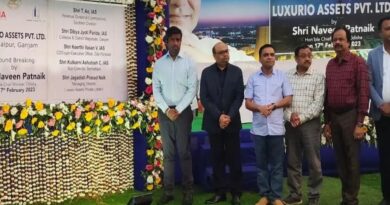DHAULI HILLS HAS MADE SAMRAT ASHOK AND FUJI GURUJI IMMORTAL
Dhauli Hillls of Odisha located at a distance of 13 kms from Bhubaneswar was earlier famous for the Ashokan inscriptions and had made Samrat Ashok immortal as he was changed from “ Chandashok” to “Dharmashok’ after witnessing the horrors of the war and miseries of the people , particularly the families of the war victims. The Ashokan inscriptions at Dhauli was famous round the world which was visited by thousands and had made Emperor Ashok Immortal . But because of lack of communication and less publicity it failed to attract more tourists. But the entire scenario changed after Most Venerable Reverend Nichiidastu Fujii, popularly known as Fujii Guruji , President of Japan Buddhan Sangh ( Nipponzan Myohoji )built India’s second Shanti Stupa over the Dhauli Hills.
Fujii Guruji was inspired by two eminenent Odias,, namely Upendra Maharathi and Nityananda Kanungo. Maharathiu was an ardent devotee of Guruji and was the Director of Handicrafts and Industrial Designs, Government of Bihar posted at Patna and Kanungo was the Governor of Bihar. Both Kanungo and Maharathi were very close to each other and convinced Guruji to visit Dhauli Hills which was virtually the turning point in the life of Emperor Ashok to adopt Buddhism .
Finally Guruji agreed to visit Dhauli and Kanungo suggested Maharathi to make necessary arrangements in Bhubaneswar.
Programme for Guruji’s visit was finalised and Maharathi wrote a letter to me mentioning about Gruji’s programme in 1970. During Guruji’s visit to Dhauli Hills, Naharathi ji was present along with me, his nephew Dolagovind Baliarsingh, Prof. Holding a high post in the Ghanasyam Paikray ( His of nephew in law) and Prof, Gouri Kumar Brahma who was holding a high post in the State Tourism Department.
Gruji who was very much upset over the atomic attack on Hiroshima and Nagasaki in Japan was campaigning for establishment of world peace as a decuple of Mahatma Gandhi and had decided to go ahead with construction of peace pagodas all over the world to ensure non-violence and peace,was very much charmed and excited when Dr Brahna narrated him about the Kalinga War which was faught on the bank of river Daya at the foot of Dhauli hills , which virtually forced the great Samrat Ashk to change his mind against violence and to preach the message of peace of Lord Buddha.
After knowing the story of Kalinga War and the change in the hear and mind of Emperor Ashok Guruji then and there announced to build India’s second Shanti Stupa on the top of Dhauli Hills.
Guruji visited again for Bhumi Puja ceremony of the stupa and stayed in a thatched house at the fiit of the hills and looked after the construction of the Prayer Hall , known as Saddhjarma Vihar. During those days it was decided that construction of the Stupa would be taken care of by Kalinga Nippon Buddha Sangh, of which Guruji was the Chief Patron along with Nityananda Kanungo ji as the President, Upendra Maharathi as Secetary and Treasurer and Samaj editor Radhanatha Rath as the Vice President Vikhyu Shanti Sugei was the Joint Secretary.
Letters were written to the Chief Minister to provide road , water and power connection to the stupa site. I was assigned the job of Liaison Officer to coordinate with the State Government. At that time Md. Mumtaz Ali was the Chief Engineer P.W,D, and Khitish Patnaik Was the S.D.O., S.N. Joshi was the Superintendent Engineer of P,H.D. ( Water ) .
Dayanidhi Patnaik, a senior O.A.S. officer was the Tahasildar, Khurdha who was looking after land matters, while S.M.Patnaik, ecretary, Revenue Department was at the helm of affairs.
The design for the Shanti Stupa at Dhauli was drawn by Dr, Minoru Ooka,, professor and Head of Department of Tokyo University, along with a master plan for development of the foot hills. Maharathji was also associated with the planning which was approved by Guruji.
To look after the Japanese monks engaged in construction work and to pursue at the Government level I had to shuttle between Bhubaneswar and Dhauli very frequently in my scooter along with my wife Chandraprava who was considered as a sister to most of the Japanese monks. Guruji had fixed up to inaugurate the Stupa on 8th November, 1972.
It has four massive idols of Lord Buddha in different postures along with Gautam Buddha’s life. These are all carved on stone slabs. It has various rock edicts, which are a living testimony of emperor Ashoka’s transformation.

Name




